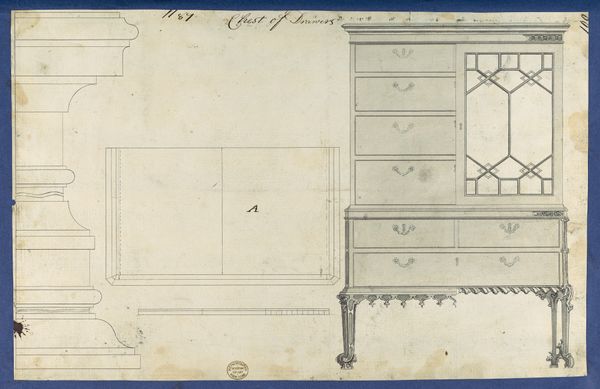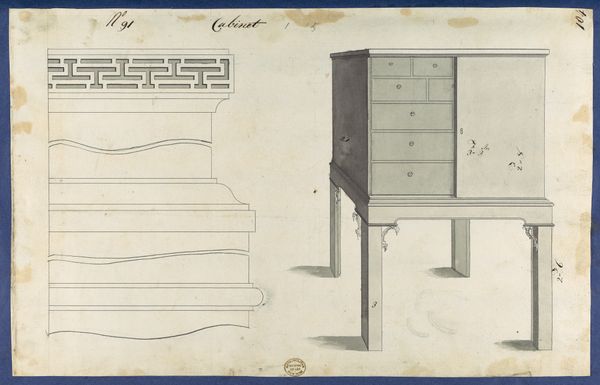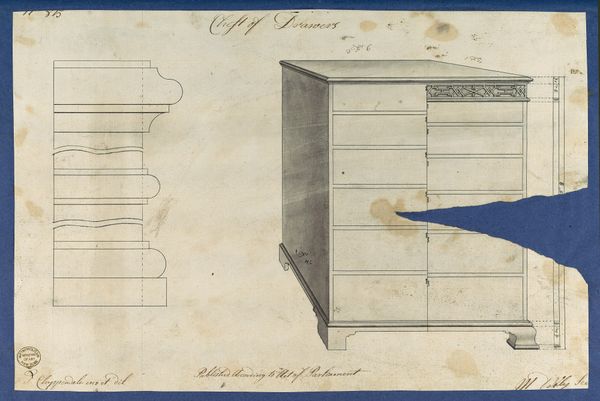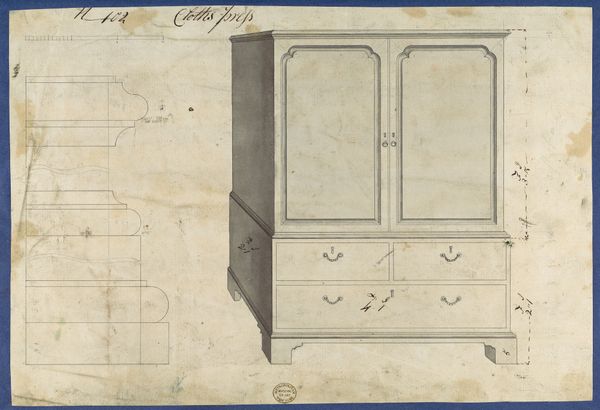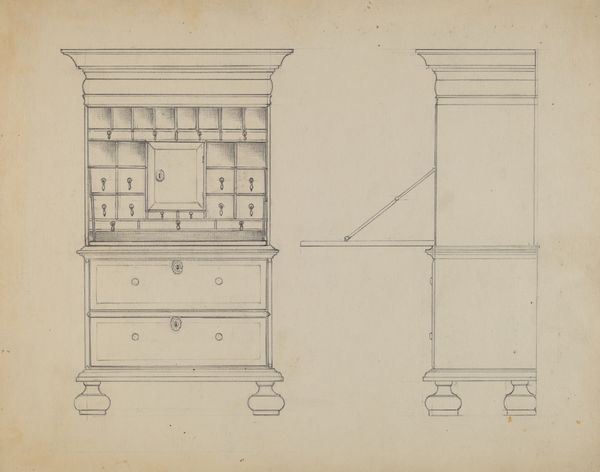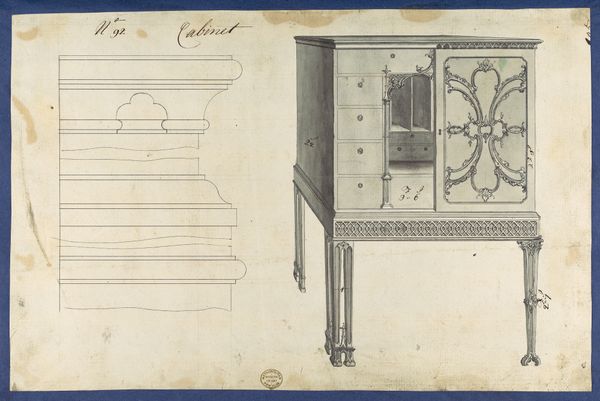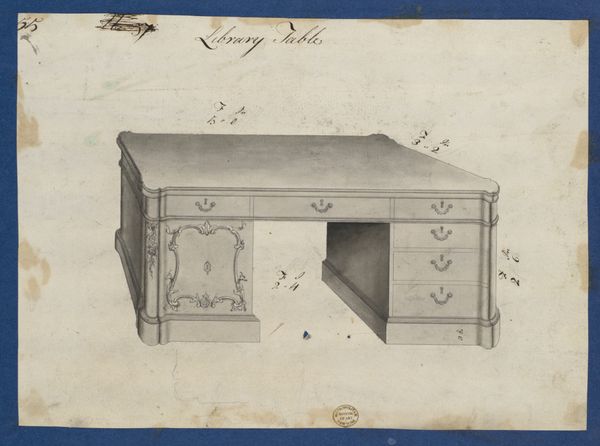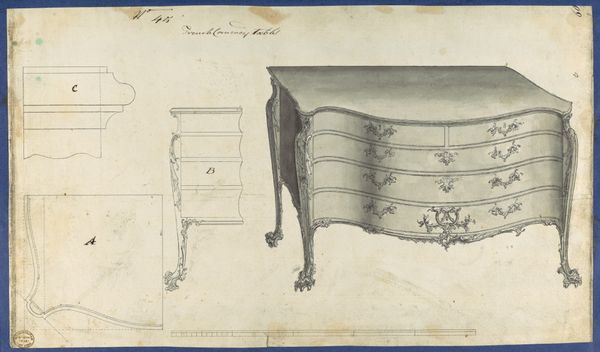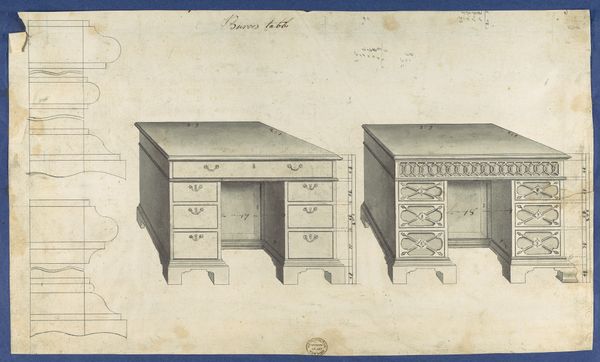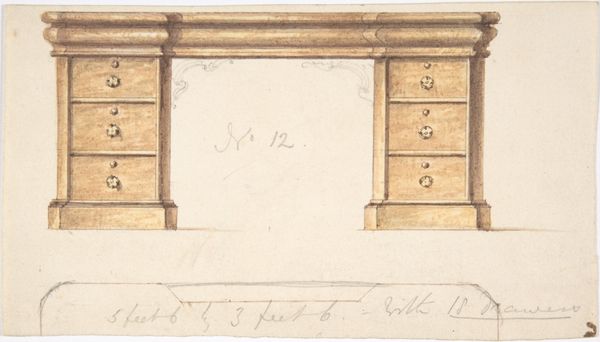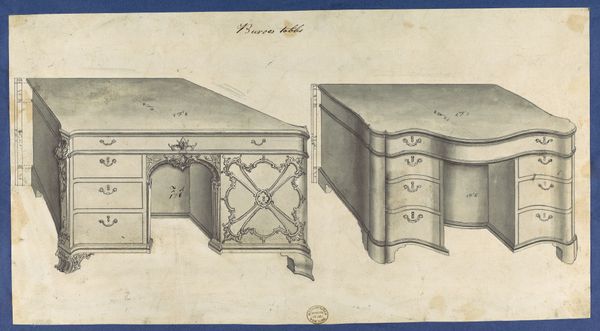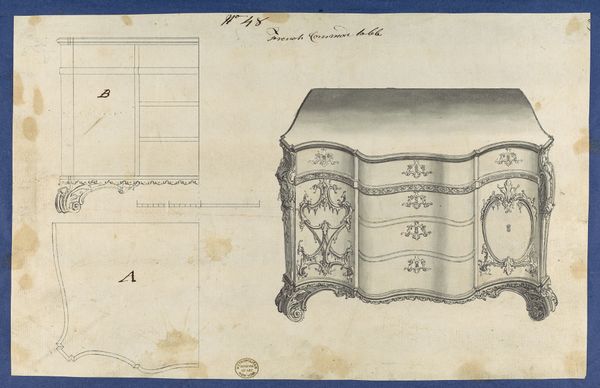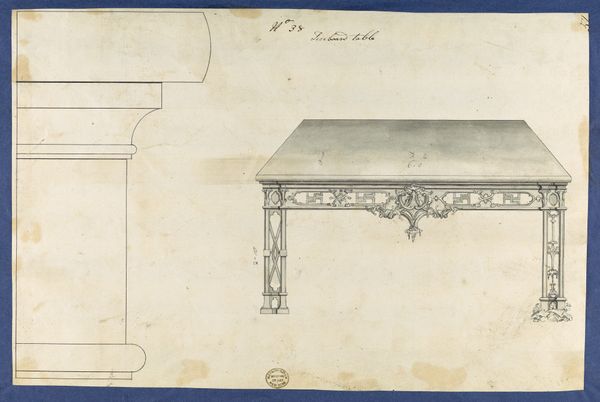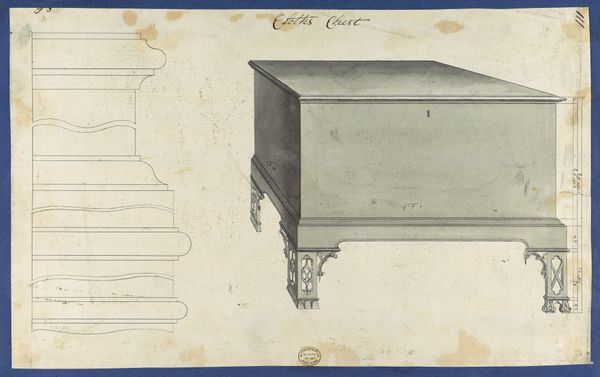
Chest of Drawers, from Chippendale Drawings, Vol. II 1753
0:00
0:00
drawing, print
#
drawing
#
neoclacissism
# print
#
landscape
#
geometric
#
decorative-art
Dimensions: sheet: 8 1/2 x 12 9/16 in. (21.6 x 31.9 cm)
Copyright: Public Domain
Editor: Here we have Thomas Chippendale's "Chest of Drawers," a drawing from 1753. It’s fascinating to see this blueprint-like rendering of a piece of furniture, almost as if it’s a landscape. What strikes you most about this piece? Curator: What jumps out is the process and materiality involved. We're seeing not just a depiction of a chest of drawers, but insight into the very labor of design and production. Notice how the drawing reveals the means through which a craftsman envisioned this object. The wood, its joinery, the pulls – each element speaks to the skills and material constraints shaping its creation. Editor: So, it’s less about the final product and more about the “making of”? Curator: Exactly. Chippendale was crafting designs that would then be interpreted and realized by other artisans. This print acts as a sort of industrial drawing ahead of its time, commodifying not just the object, but the knowledge required to produce it. Consider the social context; these drawings disseminated ideas and techniques across workshops, blurring lines between 'high art' design and artisanal craft. The act of consuming furniture transformed as people purchased this ready made form rather than directly engaging a craftsman, an example of commodification Editor: That’s interesting. I never thought of furniture design having such an impact on industry. Curator: These drawings became tools of production, democratizing access to fashionable designs but also transforming labor relationships. In your view, how does considering this as a “drawing” shift your understanding compared to seeing the actual furniture piece? Editor: Well, focusing on the drawing detaches the object from its traditional associations of luxury and places emphasis on design as labor itself. It highlights how design could be reproduced, bought, and sold. Thanks, that's given me a new way to see this, understanding how it changed not just what we bought, but how. Curator: Precisely, and that shift had enormous material consequences on society at the time.
Comments
No comments
Be the first to comment and join the conversation on the ultimate creative platform.
